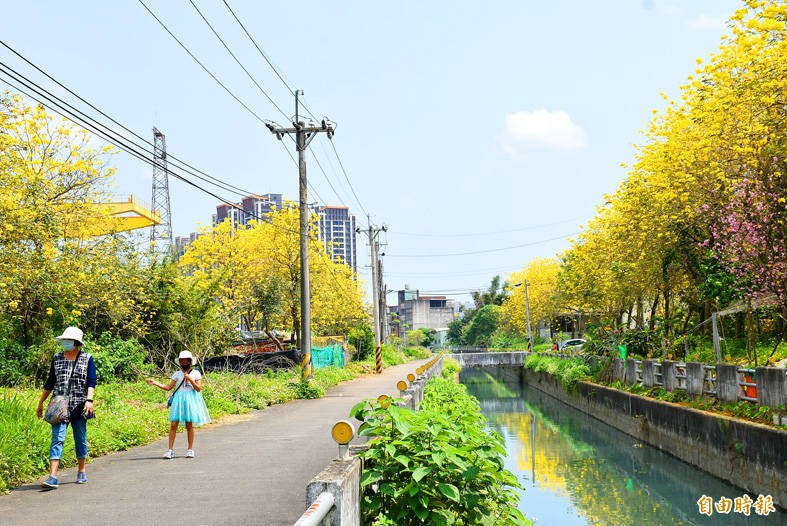《TAIPEI TIMES》 Microplastics linked to cities: research

People walk on a path along a section of a canal in the Shihmen network in Taoyuan on March 20 last year. Photo: Lee Jung-ping, Taipei Times
WASTED CLEANING? Sand from beaches on the Hengchun Peninsula contained 200 particles per kilogram, a researcher said, adding that white beaches were deceptive
By Chen Chia-yi and Jonathan Chin / Staff reporter, with staff writer and CNA
Human activity is the main mechanism behind the spread of microplastics, Taiwanese scientists said on Tuesday as they called for national standards to be established to monitor the substances.
Scientists found 1.88 to 141 plastic particles per liter of water in samples taken from the Shihmen canals (石門大圳), which was formerly Taoyuan’s largest irrigation system, Jiang Jheng-jie (江政傑), an assistant professor of environmental engineering at Chung Yuan Christian University, told a teleconference hosted by the Science Media Center Taiwan.
Microplastic fragments are defined as those that are smaller than 5mm.
The most common type of plastic particle was white or transparent microfibers from synthetic fabrics used in clothing, which suggests that the main sources of plastic pollution are urban centers near the canals, Jiang said.
Sand from beaches on the Hengchun Peninsula contained 200 plastic particles per kilogram, National Museum of Marine Biology and Aquarium deputy director Chen Te-hao (陳德豪) said.
There, too, the most common substance was white or transparent fibers, followed by fragments, film and pieces of polystyrene foam, Chen said, adding that microplastic pollution levels are strongly correlated to tourism.
White-sand beaches that were the cleanest to the naked eye actually had the highest levels of microplastic pollution, showing that beach cleaning is ineffective in removing the substance from the environment, he said.
Microplastic pollution must be combatted at the source, which means reducing plastic use, he said.
Plastic particles can be found nearly everywhere in the world, including the Kuroshio Current, which had been supposed to be free of the substance due to the speed of its waters, said Shiu Ruei-feng, an assistant professor of marine ecology at National Ocean University.
The current is a northerly flow in the northwest Pacific Ocean.
The problem cannot be tackled until Taiwan creates a common set of standards and methodology to monitor plastic particle pollution, Shiu said.
Separately, another local research team on Wednesday said that microplastic pollution in urban rivers in Taiwan is highly correlated to population density, urbanization and land use.
Microplastics are mostly derived from daily activities, roads, the manufacturing industry and natural fragmentation, Alexander Kunz, from Academia Sinica’s Research Center for Environmental Changes, told a news conference in Taipei, citing a study of water samples collected at rural and urban locations along two rivers.
Microplastics have contaminated the air, soil, deep sea and even Mount Everest’s peak, and are detected in animals and humans, said Kunz, who worked with academics at National Taiwan University and National Cheng Kung University.
The researchers examined water samples collected in 2018 along the Tamsui River (淡水河) in and around Taipei and in 2021 along the Dadu River (大肚溪) in Taichung to determine what caused a sudden increase in microplastics in urban rivers.
The researchers said that the levels of microplastics in the rivers were correlated with population density.
Their research was published in the March 15 edition of the journal Environmental Pollution.
The study found that microplastic levels were very low in the upper Dadu River, but concentrations increased in suburban Taichung.
The highest microplastic concentration was in water samples taken where the Dali River (大里溪) meets the Dadu River in Wuri District (烏日), an industrial area in the southern part of Taichung, the researchers said.
新聞來源:TAIPEI TIMES
















